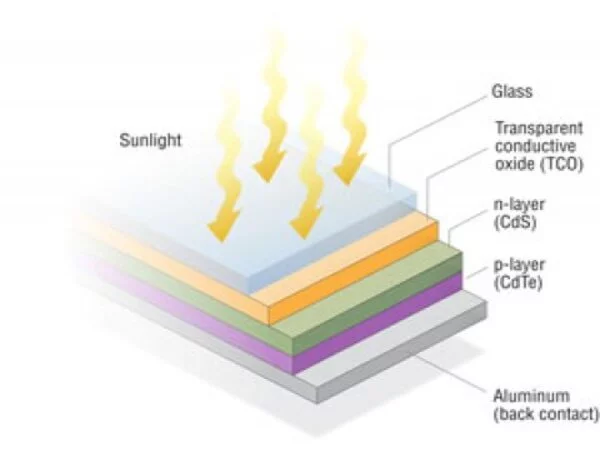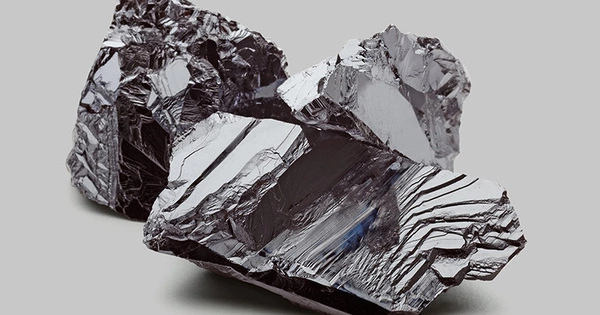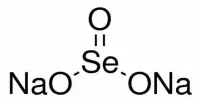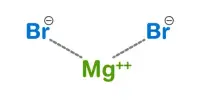Cadmium telluride (CdTe) is a crystalline compound composed of cadmium and tellurium. It is a photovoltaic (PV) technology that absorbs and converts sunlight into electricity using a thin film of CdTe. PV solar cells based on CdTe account for the majority of commercial thin-film module production worldwide.
Its primary applications are as a semiconducting material in cadmium telluride photovoltaics and as an infrared optical window. It is typically sandwiched between two layers of cadmium sulfide to form a p-n junction solar PV cell. Because the active layers of CdTe-based PV are only a few microns thick, or about a tenth the diameter of a human hair, it is classified as a thin-film technology.
Properties
Cadmium telluride is a crystalline compound formed by the elements cadmium and tellurium. It is sandwiched between two layers of calcium sulfide to form a photovoltaic solar cell with a p-n junction. It is insoluble in water and is etched by many acids, including hydrobromic and hydrochloric acids. It is sold commercially as powder or crystals. It can also be used to create nanocrystals.
- Chemical formula: CdTe
- Molar mass: 240.01 g/mol
- Density: 5.85 g·cm−3
- Melting point: 1,041 °C (1,906 °F; 1,314 K)[2]
- Boiling point: 1,050 °C (1,920 °F; 1,320 K)
- Solubility in water: insoluble
- Solubility in other solvents: insoluble
- Thermal conductivity: 6.2 W·m/m2·K at 293 K
- Crystal structure: Zinc blende

Chemical properties
Water does not dissolve CdTe. CdTe has a high melting point of 1041 °C and begins to evaporate at 1050 °C. At room temperature, CdTe has a vapor pressure of zero. Because of its high melting point and insolubility, CdTe is more stable than its parent compounds cadmium and tellurium, as well as most other Cd compounds.
Cadmium telluride is available commercially as a powder or crystals. It can be transformed into nanocrystals.
Applications
CdTe is used to manufacture thin film solar cells, which accounted for approximately 8% of all solar cells installed in 2011. They are among the most affordable types of solar cells, though total installed cost is dependent on installation size and many other factors, and has fluctuated dramatically from year to year. First Solar dominates the CdTe solar cell market. Around 2 GWp of CdTe solar cells were produced in 2011; for more information and discussion, see cadmium telluride photovoltaics.
CdTe and mercury can be alloyed to create a versatile infrared detector material (HgCdTe). A solid-state X-ray and gamma ray detector made of CdTe alloyed with a small amount of zinc is excellent (CdZnTe).
CdTe is used as an infrared optical material for optical windows and lenses, and it has been shown to perform well over a wide temperature range. An early form of CdTe for IR applications was marketed under the trademarked name Irtran-6, but this is no longer in use.















